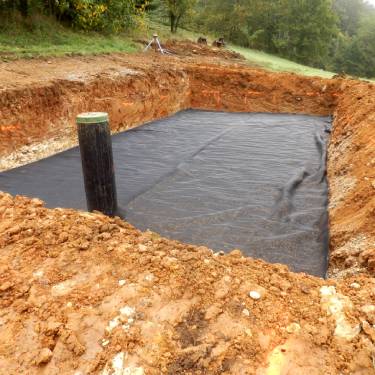
Geomembrane liners are essential for numerous applications, from landfills to water reservoir containment. But as with any material, several factors can compromise their effectiveness and lifespan. Understanding these factors helps you take proactive measures to ensure your liner lasts longer and performs better. So review the things that decrease the lifespan of geomembrane liners.
Poor Installation Practices
Installation can make or break your geomembrane liner’s longevity. Poor practices, such as leaving wrinkles, folds, or air pockets, can introduce weaknesses into the liner system. These imperfections may not seem significant initially, but they can lead to serious damage over time. Proper installation requires skilled professionals who understand how to lay the liner smoothly and securely to prevent such issues.
Extreme Weather Conditions
Exposure to extreme weather conditions significantly decreases the lifespan of geomembrane liners. High temperatures can make the material brittle, causing it to become more susceptible to cracks and tears.
On the other hand, freezing temperatures can make the liner less flexible, which can lead to breakage. UV radiation also weakens the geomembrane material over time, causing it to degrade and lose its effectiveness. Fortunately, using protective measures, such as UV-resistant materials, is a smart tip for maintaining your geomembrane liner.
Chemical Exposure
The materials within a geomembrane liner also affect its lifespan. Chemicals react with the liner material, causing it to degrade and lose its protective properties. To minimize chemical degradation, select a liner material compatible with the substances it contains.
For example, many use high-density polyethylene (HDPE) liners in applications with harsh chemicals because of their excellent resistance to many solvents. Furthermore, flexible polypropylene (FPP) or ethylene propylene diene monomer (EPDM) liners are ideal for oils or hydrocarbon applications.
Mechanical Damage
Heavy equipment, sharp objects, and excessive loads pose substantial risks to geomembrane liners. Punctures, tears, and other forms of mechanical damage can compromise the liner’s integrity. Implementing protective measures, such as using geotextiles or other protective layers, and ensuring careful handling during and after installation can help reduce the impact of mechanical damage.
Biological Factors
Nature also plays a role in the degradation of geomembrane liners. Root penetration from nearby vegetation can puncture the liner, while microbial growth can weaken the material over time. Using root barriers and treating the liner with antimicrobial agents are effective strategies to guard against these biological threats.
By considering these factors and implementing proper practices, you can significantly extend the lifespan of your geomembrane liners, ensuring they continue to serve their purpose effectively for years.




















